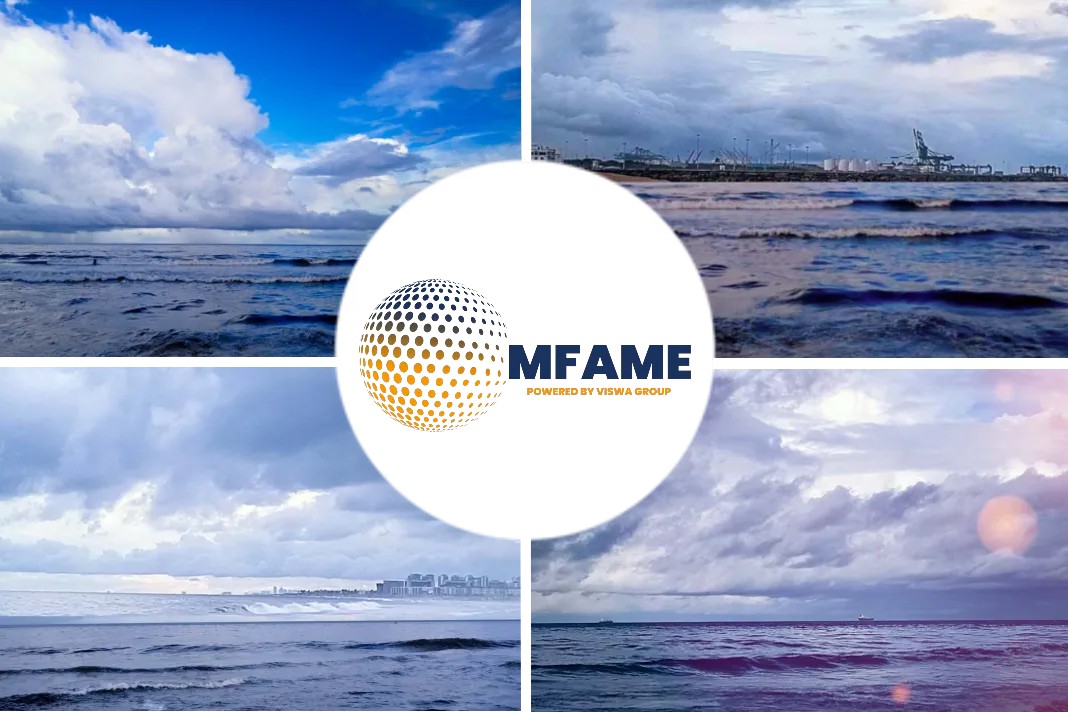
Hello, goodbye: Shipping’s latest entries and exits on Wall Street, says a Freightwaves news article.
Shipping stocks are having a good run
Shipping stocks are having a good run, generally outperforming the S&P 500, Dow Jones Industrial Average and NASDAQ 100 during the past three years amid the pandemic and Russia-Ukraine war.
For those looking to place more bets on U.S.-listed shipping stocks, the lineup is in flux. There are new listings on the New York Stock Exchange and NASDAQ. There are also continued departures as more public players go private.
Latest listings and exits
CoolCo (NYSE: CLCO) began trading on NYSE on March 20. The company has a fleet of 12 LNG carriers with multiple charters expiring this year and next, providing exposure to potentially rising rates.
“I describe CoolCo as Flex LNG [NYSE: FLNG] with upside,” said CoolCo CEO Richard Tyrrell at the 17th Annual Capital Link International Shipping Forum, held in New York this month.
Himalaya Shipping has filed a registration for a share sale and NYSE listing under the ticker HSHIP. The company owns 12 dual-fuel, 210,000-deadweight-ton dry bulk carriers.
Heidmar — a well-known manager of tanker and dry bulk commercial pools — announced on March 20 that it will list on NASDAQ via a reverse merger with the SPAC Home Plate Acquisition Corp. under the ticker HMAR.
Tanker owner Toro Corp. (NASDAQ: TORO), a spinoff of Castor Maritime (NASDAQ: CTRM), began trading March 8.
On the exits side of the ledger, formerly NYSE-listed Atlas Corp., parent of Seaspan, the world’s largest lessor of container ships, was delisted Tuesday. The company was taken private by a group of insiders including Fairfax Financial Holdings and the Washington family, together with ocean carrier ONE.
Hoegh LNG Partners was delisted from NYSE on Jan. 2 after being purchased by its private sponsor, Morgan Stanley-owned Hoegh LNG.
GasLog LNG Partners (NYSE: GLOP) looks like the next to go. On Jan. 25, it received a take-private offer from its sponsor company, GasLog Ltd., which was itself taken private by insiders and BlackRock in June 2021.
Aggregate loss of market cap due to entry-exit mix
Shipping companies leaving Wall Street over recent years have boasted strong long-term cash flows that attract large institutional buyers.
In contrast, several of the shipping companies arriving on Wall Street have been very small companies with shares that, by the companies’ own admission, pose high risks to investors and traders.
In addition to the take-private deals for Atlas, Hoegh LNG Partners, GasLog Ltd. and GasLog Partners, Golar LNG (NYSE: GLNG) exited shipping by selling its LNG fleet to CoolCo in December 2021. Container-equipment lessor CAI was bought by Japan’s Mitsubishi in November 2021. Seacor was taken private by American Industrial Partners in April 2021. Teekay LNG was delisted and bought by Stonepeak in January 2021. DryShips was taken private by its founder, George Economy, in October 2019.
The aggregate market caps of all the shipping companies taken private in recent years (or in the process of privatizing), calculated as of the day prior to their take-private offers, was $10.5 billion.
Among the Wall Street arrivals since 2019, the largest was ocean carrier Zim (NYSE: ZIM), which IPO’d in January 2021. The second largest among the newcomers, Flex LNG, listed in June 2019.
The other entrants have had dramatically smaller market caps.
United Maritime (NASDAQ: USEA), a spinoff of Seanergy (NASDAQ: SHIP), began trading last July. Imperial Petroleum (NASDAQ: IMPP), a spinoff of StealthGas (NASDAQ: GASS), began trading in December 2021.
OceanPal (NASDAQ: OP), a spinoff of Diana Shipping (NYSE: DSX), commenced trading in November 2021. Castor Maritime began trading on NASDAQ in February 2019.
As of Wednesday, the aggregate market cap of companies listing since 2019, from Castor to CoolCo, was $5.9 billion. That’s roughly half the pre-take-private-announcement market cap of the companies that have delisted from NYSE or NASDAQ or exited shipping over the same time frame.
What’s driving privatizations
Many of the take-private deals have involved LNG shipping companies with extensive long-term charter coverage. The most recent exit, Atlas Corp., is a container-ship lessor that also has long-term coverage.
During the Capital Link forum, Stifel analyst Ben Nolan explained, “What differentiates the LNG segment relative to tankers and dry bulk is that you can get long-term cash flows. Infrastructure funds — which are by and large the ones buying these companies — are not making spot plays.”
Nolan also pointed out that many of the companies that were privatized were master limited partnerships (MLPs). “The MLPs were structurally a challenge, with valuations struggling to get back to reasonable levels. If there’s a structural reason your stock’s trading [low], going private is a valid way to think about it.”
According to Christian Wetherbee, shipping analyst at Citi, “It’s about duration and cash flow and predictability. That’s the reason we’ve seen private capital come in and withstand the leverage needed for those types of transactions. I don’t know that it lends itself to something closer to spot or shorter durations, like you see in some of the other shipping subsectors.”
What’s driving (some) new listings
Many of the new listings over recent years — as well as their subsequent follow-on offerings — are being handled by investment bank Maxim. These include Toro, Delta Holding, United Maritime, Imperial Petroleum, OceanPal and Castor.
Larry Glassberg, co-head of investment banking at Maxim, said during the Capital Link event, “IPOs in this market are going to be very challenging. But I think you will see people opportunistically do things, particularly around reverse mergers and utilizing SPACs … as a mechanism to get public and scale post-closing of those transactions.”
Did you subscribe to our daily Newsletter?
It’s Free! Click here to Subscribe
Source: Freight Waves














![[Watch] Crazy Power Needed to Move World’s Largest Containerships](https://mfame.guru/wp-content/uploads/2023/11/mfame-tanker-100x70.jpg)
